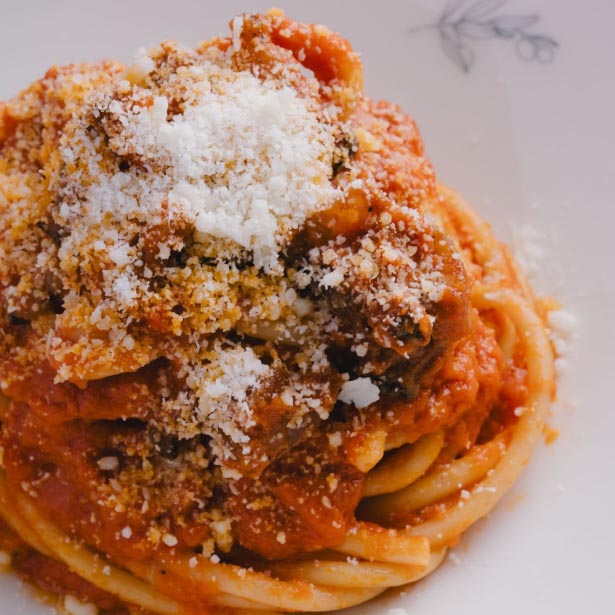
The Rich History of Pasta: Origin Story
.Pasta, one of the world’s most beloved and recognizable dishes, has a long and rich history that spans centuries. From humble beginnings to a global staple, the journey of pasta is a testament to Italy’s enduring culinary traditions. In this article, we’ll explore the fascinating origins of pasta in Italy, the evolution of its shapes, and how it continues to be a symbol of Italian culture today.
The Ancient Roots: Origins of Pasta in Italy
While pasta is now synonymous with Italy, its origins are often debated. Some believe pasta arrived in Italy through Marco Polo’s travels to China in the 13th century, but historical evidence
suggests pasta-like dishes existed in Italy long before. For instance, ancient Roman writings describe dough-like preparations made from durum wheat, which is still the essential ingredient in many pasta varieties today.
However, it wasn’t until the Middle Ages that pasta began to resemble the dish we know and love. By the 12th century, dried pasta, known as pasta secca, became popular in Sicily, where it was prepared with wheat flour and water, then sun-dried for preservation. Because this dried pasta could be stored for long periods, it became a staple for sailors and traders during long voyages.
As a result, pasta began to spread across Italy, and over time, it became a beloved part of the Italian diet. This early development laid the foundation for pasta’s enduring place in Italian cuisine, as people discovered new ways to make, cook, and serve it. Whether enjoyed fresh or dried, pasta was here to stay.
Italian Pasta Traditions: A Culinary Journey
Throughout the centuries, pasta has woven itself into the fabric of Italy’s culinary identity. Each region of Italy has its pasta traditions, shaped by local ingredients and customs. For example, the north is known for rich, egg-based pasta like tagliatelle and pappardelle, often paired with creamy sauces. Meanwhile, the south favors durum wheat pasta like orecchiette and bucatini, which are typically served with robust tomato-based sauces.
During the Renaissance, pasta was considered a luxury food for the wealthy, often served with elaborate sauces. However, as pasta-making techniques evolved, it became more accessible to the masses. By the 18th century, pasta was a common dish in Italian households, no longer reserved for the elite.
This culinary journey has made pasta a symbol of Italian tradition and hospitality. Whether served at a family gathering or a special celebration, pasta is a dish that unites generations. The act of making pasta by hand passed down through families, is a labor of love that reflects the pride Italians take in their food. And while techniques and ingredients have evolved, the heart of Italian pasta-making remains unchanged: simplicity, quality, and passion.
The Evolution of Pasta Shapes: A Reflection of Italian Culture
As pasta gained popularity, its shapes began to evolve in response to regional preferences and practical needs. Today, there are over 350 different pasta shapes, each designed with a specific sauce or cooking method in mind. For example, long, thin shapes like spaghetti are ideal for light, oil-based sauces, while short, tubular shapes like penne are perfect for catching rich, chunky sauces.
Interestingly, the evolution of pasta shapes also reflects Italy’s diverse geography and culture. In the rugged, mountainous regions of northern Italy, heartier, thicker pasta like pizzoccheri were developed to withstand colder climates and heavier sauces. Meanwhile, in southern Italy, lighter, airier shapes like fusilli and farfalle were favored, pairing well with the sun-ripened vegetables and fresh herbs of the Mediterranean.
Over time, pasta-making shifted from a purely artisanal process to an industrial one. The development of pasta factories in the 19th century allowed for mass production, making pasta more affordable and accessible to people all over the world. Despite this industrialization, artisanal pasta makers still thrive in Italy today, preserving traditional methods of shaping and drying pasta by hand.
Pasta Today: A Global Staple
While pasta may have started its journey in Italy, it has since become a global sensation. From classic Italian pasta dishes to fusion cuisines that incorporate pasta with local flavors, this versatile food has adapted to cultures and kitchens around the world. In fact, pasta has become so universally loved that October 25th is celebrated as World Pasta Day—a tribute to its global appeal.
In Italy, pasta remains a deeply cherished part of everyday life, often enjoyed in multiple courses during a traditional meal. However, its significance goes beyond just being a delicious dish. For Italians, pasta is a symbol of community, tradition, and shared experiences. Whether it’s a simple plate of spaghetti aglio e olio or a rich bowl of lasagna, pasta represents comfort, family, and a connection to Italy’s rich culinary heritage.
As we look to the future, pasta continues to evolve with the times, while staying true to its roots. Artisanal pasta makers are bringing back ancient grains and experimenting with new ingredients, while chefs around the world are reimagining pasta dishes in exciting ways. Yet, at its core, pasta remains a humble food that celebrates simplicity, quality, and tradition.
The history of pasta is a story of innovation, adaptation, and tradition. From its ancient origins in Italy to its status as a global culinary icon, pasta has remained a beloved and versatile dish that transcends borders. As we enjoy pasta in all its forms—whether shaped by hand or mass-produced—let’s remember the centuries of tradition, culture, and creativity that brought this simple food to our plates. Next time you sit down to a comforting bowl of pasta, take a moment to appreciate the incredible journey it has traveled to become the dish we all know and love.


